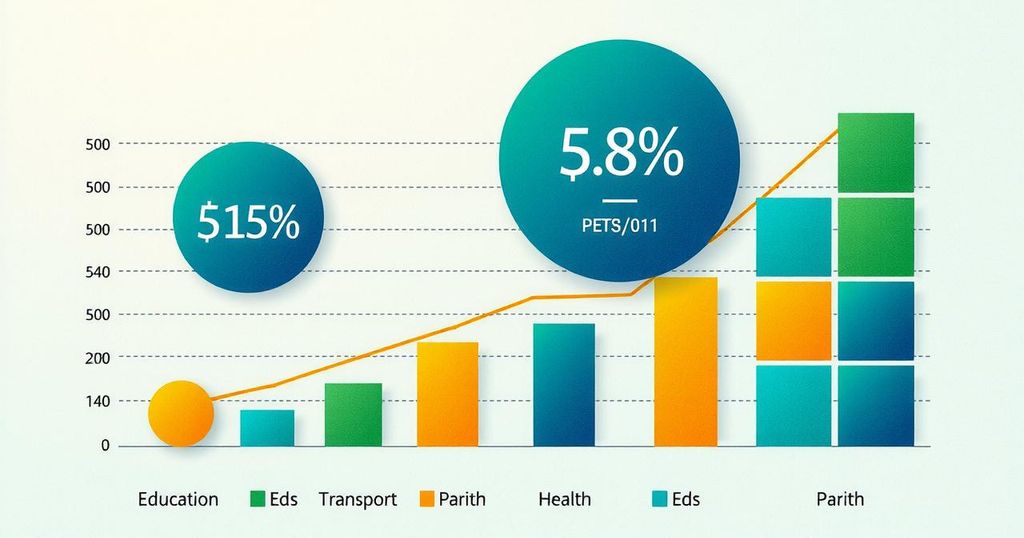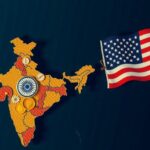Economic Developments in India: Budget Increases, Tariff Talks, and Market Trends
The article reviews key economic developments in India, focusing on Delhi’s significant budget increase, ongoing tariff negotiations with the U.S., notable salary hikes for MPs, and a decline in India’s emerging market ranking. It highlights consumption trends, the rise of social media influencers, the success of penny stocks, and the recovery in the scooter market.
The economic developments in India illustrate significant changes and challenges facing the nation. The Bharatiya Janata Party (BJP) government in Delhi has announced a substantial budget increase, focusing on education, transport, health, housing, and social welfare. Concurrently, India navigates discussions with the United States regarding mutual tariffs while experiencing a noticeable decline in emerging market rankings. Furthermore, recent wage hikes for members of parliament have raised concerns about income disparity, and the consumption patterns indicate weak trends amid mixed signals from the economy.
Delhi Chief Minister Rekha Gupta has proposed a ₹1 trillion budget for 2025-26, a remarkable 44% increase compared to revised estimates from the previous year. Key allocations include education at 19.3%, transport at 12.95%, health at 12.89%, housing at 10.7%, and social welfare at 10.6%. This budgetary infusion aims to enhance infrastructure, sanitation, health systems, and public transport.
On the international front, discussions on reciprocal tariffs draw attention as the April 2 deadline approaches. President Donald Trump suggested possible exemptions for multiple countries, indicating a softer stance. The aim is to resolve tariff disparities with emerging markets, with India seeking to mitigate threats of retaliatory tariffs that could impact its trade partnerships.
While Parliament members have received a 24% salary increase effective retroactively from April 1, 2023, commensurate pay continues to stir debate due to stark contrasts with public income. The new monthly salary for MPs will be ₹1.24 lakh, highlighting the growing income divide, especially against the backdrop of India’s estimated per capita income of ₹14,333.
India’s position among emerging markets has shifted, dropping to sixth place due to stock market fluctuations and a decline in exports, despite robust domestic GDP growth. Brazil has taken the lead, followed by China, Thailand, Indonesia, and the Philippines. This shift is compounded by a nearly 14% decrease in stock market capitalization month-on-month and an 11% year-on-year drop in export levels.
Recent reports indicate concerning trends in India’s consumption-driven credit sector, revealing a 32% year-on-year decline in credit card originations and a 9% decrease in home loans over the October-December period. However, personal loan origination showed the strongest growth amid a generally subdued credit market for other consumer goods.
In the sphere of digital marketing, Hindustan Unilever Ltd has significantly increased its engagement with social media influencers, collaborating with 8,000 this fiscal year, compared to 700 the previous year. This surge reflects the evolving landscape of India’s creator economy, fueled by a younger demographic’s preference for social media over traditional mediums.
Meanwhile, penny stocks have experienced a remarkable resurgence since the market crash of 2020, with approximately 90% generating more than a 100% return during the latest bull run. This performance is second only to the substantial gains recorded from 2003 to 2008.
Finally, the scooter market in India is on track to exceed pre-pandemic sales levels, with unit sales growing more than threefold compared to motorcycles in the current fiscal year. With 6.3 million units sold between April 2024 and February 2025, the scooter segment indicates a strong recovery trajectory in mobility around the nation.
In summary, the recent economic developments in India signal both growth opportunities and challenges. The significant budget increase in Delhi aims to enhance key sectors, while ongoing tariff negotiations with the United States pose risks for trade stability. Salary hikes for parliament members raise concerns over income inequality amidst declining consumption trends and shifting market rankings. Ultimately, the future of India’s economy is poised for potential growth driven by consumer preferences and market recovery.
Original Source: www.livemint.com








Post Comment